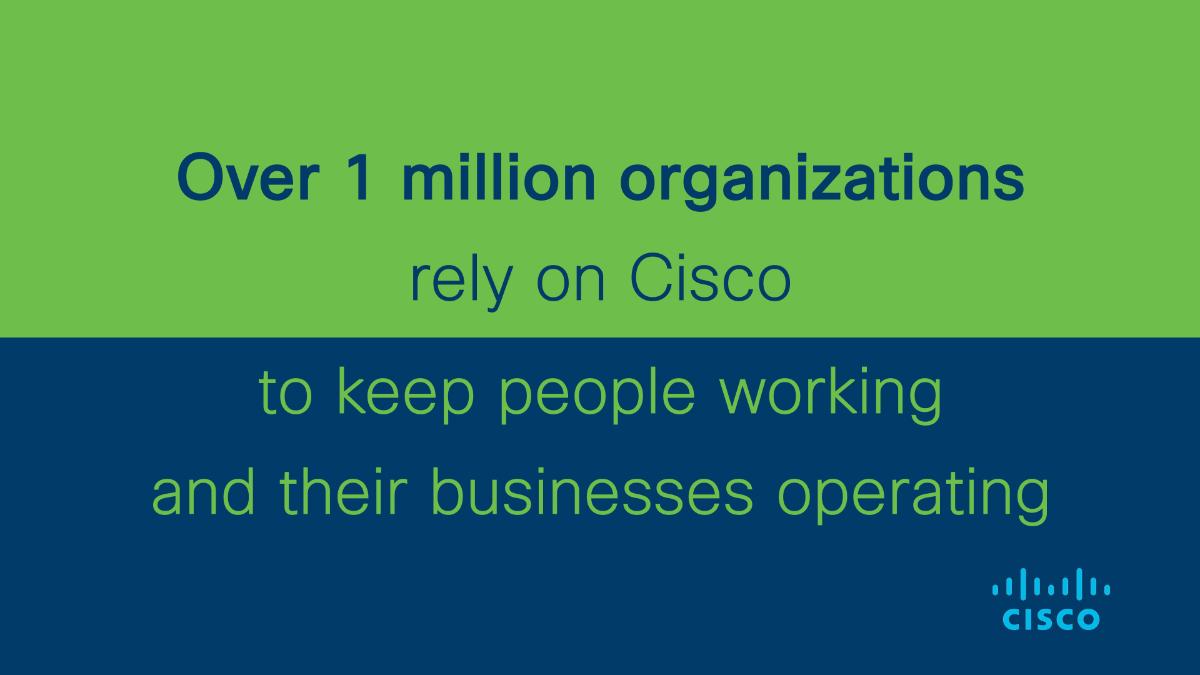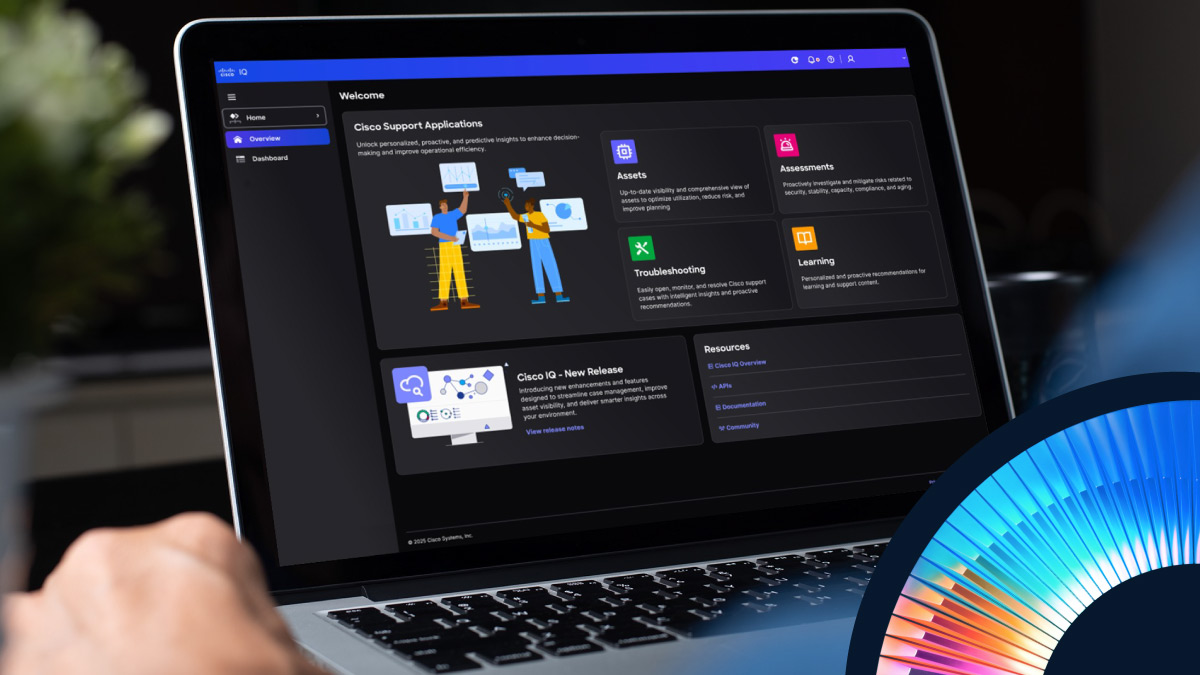“We’re all having to adjust to a new normal,” Cisco’s SVP and Chief People Officer Francine Katsoudas said in an industry roundtable on March 25th. “Social distancing and working from home is something we’re talking about on a regular basis. And it’s a way for us to stay safe and still connected to the work that we do.”
The roundtable itself was a perfect example of how technology can support business and social continuity amid the seismic shifts of the Covid-19 pandemic.
Katsoudas moderated the virtual event, which connected 290 attendees, including press, industry analysts, and public and private sector leaders from around the world — all safe in their homes watching on Cisco.com.
A core theme was how organizations are coping with and adapting to a stressful and fast-changing “new normal.” Expert speakers included Jacqueline Guichelaar, Cisco SVP and chief information officer; a telehealth manager for a Bay Area hospital; and Andrea Prencipe, professor of organization and innovation at Luiss Guido Carli University in Rome.
Katsoudas began by exploring the mental and emotional challenges of the current crisis — along with the upheavals in work cultures that may not be accustomed to remote work.
“We’re having to learn ways to build trust virtually,” she said, “and to be more transparent and to change our behaviors to build communities inside and outside of work.”
Katsoudas emphasized the key role that Cisco is playing to support organizations of all kinds as they negotiate the fast-moving challenges of the Covid-19 pandemic.
“From a Cisco perspective,” she said, “we’ve learned that across the world, we can do a lot more to work remotely than we’ve ever thought. And we’ve had more than one million organizations relying on Cisco to keep people working and their businesses going at this time.”

A university prepared for sudden change
A short time ago, no one could have predicted the profound changes that are upending the world today. But the most digitized organizations have weathered the storm the best.
As Principe explained, his organization had the infrastructure in place to shift quickly to online learning. On March 5, he said, all professors and students were still on campus. But with the virus threatening to spread across all of Italy, the university implemented a full-on home learning plan in just a few days.
“Since March 5th,” he said, “we are running 3,000 classes, 10,000 students and, 500 exams, and over 22 million connections.”
And not just exams. Later this week, students will be graduating.
“We have students defending their theses,” Principe added, “and by the end of this week we’ll have 450 students getting their degrees. It will all be done digitally, remotely, but in a synchronized way. We wanted to maintain relationship between students and educators.”
Not that it was easy.
“The situation that we were facing was complicated, dynamic and ambiguous,” Principe said. “And we didn’t know how it was evolving.”
But he added that earlier decisions to implement digital learning paid off. “We may have been overshooting,” he said, “But when you face an ambiguous situation, continuity is important.”
Keeping the world up and running
Guichilaar was asked about the extra measures that Cisco is taking to support end users as they struggle to maintain their operations in this challenging time. Using service providers as a prime example, she shared the efforts to meet surging demands in data centers.
“We are going into data centers and freeing up capacity in real time, weekends, evenings, mornings,” she said, “in order to put the capacity where it most matters for our customers, for our communities, for hospitals, etc. And in order to do that we are relying on our services provider partners.”
That means that multiple teams from different organizations are collaborating within the data centers — as quickly and spontaneously as the demand dictates.
“There are no contracts to increase the workforce,” she emphasized. “It’s ‘Let’s just get the work done!’ The beauty of it is, we are joining forces across the industry to figure out what we have to do to get the right equipment into the right data centers to provide the right capacity for the right services. We are all mindful of how important that is, and we are providing services on the fly.”
And she’s reminded every day of the critical situation for CIOs in all industries, as they struggle to keep their organizations functioning, as entire workforces are suddenly locked down at home.
“They’re all asking the same questions,” Guichilaar said, “how do I scale my collaboration, how do I expand my network quickly and secure it at the same time.”
Despite the stark challenges, a sense of camaraderie is emerging, as it has for so many others on the front lines of the current crisis.
“The phone calls between me and my CIOs around the country,” she said, “are probably 50 times more, so keeping up with it is tough. But we really are trying to help each other.”
Cisco’s own numbers reveal the stress that companies feel. While Cisco is a highly digitized company and all but wrote the book on remote working, the current surge is challenging even for Guichilaar.
“We typically have 25,000 working from home,” she said, “but during the last couple of weeks, that has gone from 25,000 employees to 140,000 in 96 countries, in 498 cities. And that is unprecedented.”

Supporting a strained health care system
As the daily headlines attest, the Covid-19 crisis continues to accelerate at an alarming pace, especially in hard-hit regions like New York and the San Francisco Bay Area. Front-line health workers are stressed to the limits of human endurance, and bed space and critical equipment are vastly overstretched.
That’s why telehealth is an essential resource. It’s freeing doctors to concentrate on the most pressing cases, while enabling less critical patients to be diagnosed and recuperate at home.
But the spike in demand is like nothing a telehealth manager at a Bay Area hospital has ever experienced.
“By the week of March 9th,” she said, “we had 250 percent growth in telehealth presence, and during that time we realized we had to scale up that technology to support way more virtual visits. By this week, we’ve had unprecedented growth of 2000 percent.”
That meant providing the technology services to patients, while also revamping a lot of processes on the fly. Automation, for example, took over as many manual tasks as possible, and volunteers were trained quickly to answer some of the more basic health questions.
“We already had the telemedicine technology in place,” the manager said. “The numbers we’re seeing are definitely unprecedented right now. But the patients and providers have reacted very positively.”
Liza Meak contributed to this article.
###
We welcome the re-use, republication, and distribution of "The Network" content. Please credit us with the following information: Used with the permission of http://thenetwork.cisco.com/.




